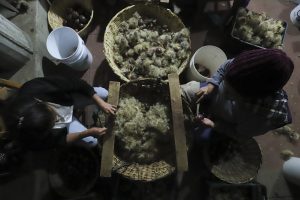
Guadalajara, Mexico, May 17 (EFE).- The fields of Techaluta, a town in the western Mexican state of Jalisco, are home to the pitaya, an exotic fruit the harvest of which has become a tradition for hundreds of local families.
Pitayas grow on century-old cacti – whose arms can reach a length of up to five meters (16.4 feet) – throughout the region’s open fields or in the garden plots of the town’s oldest houses, where family and neighbors help with cutting and peeling the prickly fruit, Ricardo Navarro, a consulting engineer working with producers, told EFE.
The red or yellow exotic fruit native to Central America and Mexico is among the most sought-after delicacies during the warm seasons due to its refreshing juice.
Techaluta is the state’s top pitaya-producing municipality, with orchards covering some 350 hectares (about 860 acres), but pitaya plots also exist in the nearby towns of Amacueca and Zocoalco, where the climate is also dry.
The season’s high temperatures force laborers to start work in the wee hours during April and May – which are the year’s highest-yielding months – when residents work by night and sleep during the day.
Early every morning, harvesters – known as “pitayeros” – put on their thick boots and arm themselves with a headlamp and a special tool consisting of a long wooden pole with four metal prongs before disappearing among the huge cacti in search of mature fruits.
Although, to the layman, the work seems easy enough, much skill is needed to cut the fruit, which can fall on workers’ heads, causing severe injuries.
